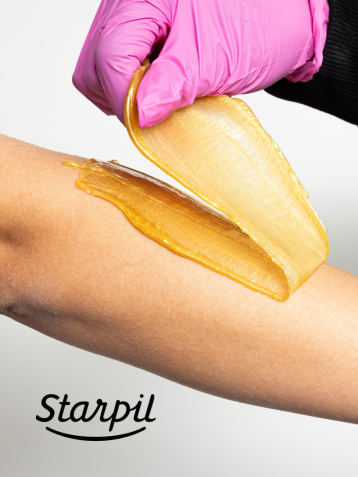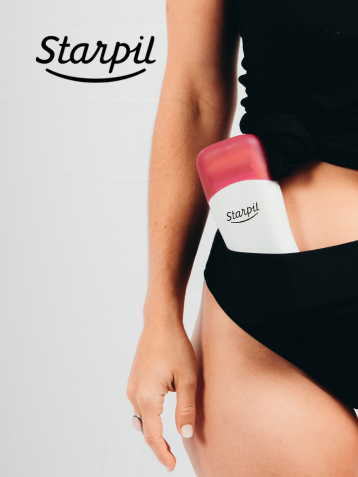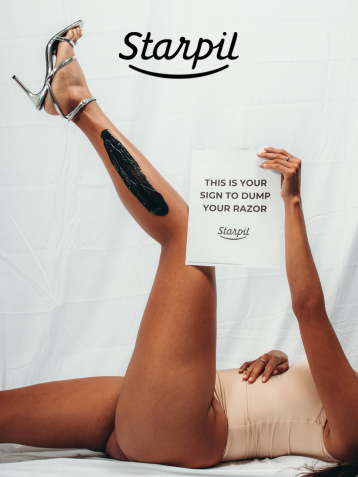Effective Ways to Remove Wax from Your Skin

Waxing is an amazing way to achieve smooth, hairless skin, but if you’re new to the process, a challenge you may encounter is how to remove excess wax left behind. Whether it’s a bit of stickiness on your skin or more stubborn wax patches, knowing how to remove wax from your skin effectively is key to ensuring a comfortable and irritation-free experience.
Table of Contents
In this blog, we’ll share the best methods for safely and easily removing wax and wax residue so you can get the most out of your waxing sessions without undue discomfort or irritation.
READ: Waxing 101: Which Direction Should You Pull the Wax?
Why Do I Have Residue After Waxing?
Before we discuss how to remove wax or wax residue from the skin after waxing, let’s first understand how wax residue is left behind. It can be frustrating to notice wax residue on your skin after waxing, but there are several reasons why this can happen:
- Too much wax: Over-applying wax can lead to a thicker layer that’s harder to remove cleanly, leaving residue behind.
- Not pulling the wax correctly: Removing wax too slowly or in the wrong direction can cause it to break or leave bits behind. Always pull wax quickly, in the opposite direction of hair growth, and close to the skin for a cleaner removal.
- Skin temperature or dryness: If your skin is too dry or cold, the wax may adhere more tightly, making it harder to remove. If using soft wax, prepping the skin with a small amount of Post-Wax Oil before waxing can help prevent this issue.
- Low-quality wax: Low-quality waxes are more prone to leaving behind sticky residue compared to salon-quality formulas.
- Type of wax: Some wax types can leave behind more residue than others. For example, soft wax is more prone to leaving behind residue than hard wax. Be sure to choose the right wax for your skin type and the area you’re waxing.
READ: Soft Wax Tips for Best Results
The Importance of Removing Wax Residue
Leaving wax residue on your skin can lead to several unwanted issues, especially for beginners who might be tempted to ignore small patches of leftover wax. Here’s why it’s crucial to remove wax properly:
- Skin irritation: Excess wax left on the skin can trap dirt, bacteria, and sweat, leading to irritation, redness, or even breakouts.
- Clogged pores: Wax can clog your pores, especially in areas with sensitive or acne-prone skin.
- Discomfort: Wax left behind can be sticky and uncomfortable, especially when it rubs against clothing.
By thoroughly removing any leftover wax, you’re ensuring that your skin remains clean, smooth, and ready for the next step in your skincare routine.
READ: Exfoliation After Waxing: When and How to Do It Right
Best Ways to Remove Wax Residue
Post Wax Oil
One of the easiest and most efficient ways to remove wax from your skin is to use Starpil Post-Wax Oil. This oil is specially designed to break down and loosen the wax, making it simple to wipe away any residue. It can also be used on your wax warmer to remove residue inside or outside your equipment after use.
Natural Oils
If you don’t have Post-Wax Oil on hand, natural oils can also do the trick. Many common household oils are great for breaking down wax for removal. Some options include:
- Coconut oil
- Olive oil
- Jojoba oil
To use, warm a small amount of your chosen oil in your hands and apply it to the waxed area. Massage the oil gently over the skin for a minute or two to help lift the wax. Then, use a cotton ball or soft cloth to wipe away both the oil and wax residue. Repeat if necessary until all traces of wax are gone.
Tip: Heat enhances the effectiveness of oils in removing wax. You can gently warm the oil (never too hot!) to speed up the process.

Petroleum Jelly
Petroleum jelly, such as Vaseline, is another effective option for removing wax from your skin. It’s particularly helpful for getting rid of smaller patches of wax that might be left behind. The thick consistency of petroleum jelly helps to lift and dissolve the wax while soothing the skin at the same time.
To remove wax with petroleum jelly:
- Apply a generous layer of jelly directly onto the waxed area.
- Massage it gently into the skin.
- Let it sit for about 5-10 minutes.
- Wipe the area clean with a soft cloth or cotton pad.
Since petroleum jelly can leave a greasy residue, it’s a good idea to follow up with a gentle cleanser to remove any leftover oil.
Warm Water & a Washcloth
For small amounts of wax, warm water and a washcloth can be enough to remove wax from your skin. Unfortunately, this method is not as effective on traditional waxes for complete removal, but can help loosen wax in a pinch.
Here’s how to do it:
- Soak a washcloth in warm (not hot) water and wring it out.
- Press the warm washcloth against the waxed area for a few seconds to soften the wax.
- Gently wipe away the wax, applying light pressure. You may need to repeat this process a few times for stubborn areas.
This method can also soothe any irritation, making it a great option for those with sensitive skin.
READ: Preventing and Treating Bruising When Waxing

What Not to Do When Removing Wax From Skin
As tempting as it might be to scratch or pick at leftover wax, doing so can damage your skin and cause irritation or even infection. Wax grips hair tightly, and pulling at it too roughly may lead to redness, cuts, or inflammation.
Instead, stick to one of the methods mentioned above to remove wax safely and comfortably. If a small bit of wax refuses to come off, give your skin a break and try again later with a gentle approach.
Bonus Tips for a Clean Waxing Experience
While learning how to remove wax from your skin is important, there are some additional steps you can take to prevent wax from sticking in the first place:
- Prep your skin: Before you wax, cleanse your skin and apply a Pre-Wax Gel to cleanse the area of bacteria or debris, creating an ideal surface for your wax.
- Use the right amount of wax: Over-applying wax can lead to excess residue. Use just enough to cover the area you’re waxing and remove hair efficiently.
- Follow the correct waxing technique: Always apply wax in the direction of hair growth and remove it in the opposite direction. This will minimize any leftover wax on the skin.
READ: Guide to Bikini Waxing: Where to Wax the Bikini Line
Final Thoughts
Removing wax from your skin doesn’t have to be a hassle if you have the right techniques and products. Remember, the key to a successful waxing experience is preparation, care, and patience. Whether you choose to use a Post-Wax Oil, natural oils, or even just warm water and a washcloth, these methods will help you remove any wax residue while keeping your skin smooth and irritation-free.








Comments